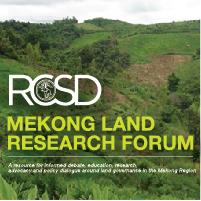Resource information
Sudden and gradual land use changes can result in different socio-ecological systems, sometimes referred to as regime shifts. The Lao PDR (Laos) has been reported to show early signs of such regime shifts in land systems with potentially major socio-ecological implications. However, given the complex mosaic of different land systems, including shifting cultivation, such changes are not easily assessed using traditional land cover data. Moreover, regime shifts in land systems are difficult to simulate with traditional land cover modelling approaches. A novel simulation approach was employed that focused on simulating changes in land systems rather than focusing on land cover. With the CLUmondo model we simulated three scenarios of potential developments between the years 2010 and 2030 assuming different degrees of international market integration and sustainable growth objectives. Although all scenarios show a decline of shifting cultivation systems, the respective orientation of markets and land governance resulted in strongly different land change trajectories. The land system changes are strongly location dependent and different trajectories are found in different parts of the country. Some scenarios show clear elements of land sparing with intensification of land management in the valleys and re-growth of forest on sloping land. Other scenarios show elements of enhanced multi-functionality. The approach addressed methodological challenges in simulating land system regime shifts and complex mosaic landscapes while accounting for societal demands for different types of goods and services from land systems. The land systems approach allows a nuanced representation of different types of forests and agricultural systems such as shifting cultivation and commercial agricultural plantations. Simulation results contribute to a debate about desired future land use on the national scale including its environmental and socio-economic implications.



